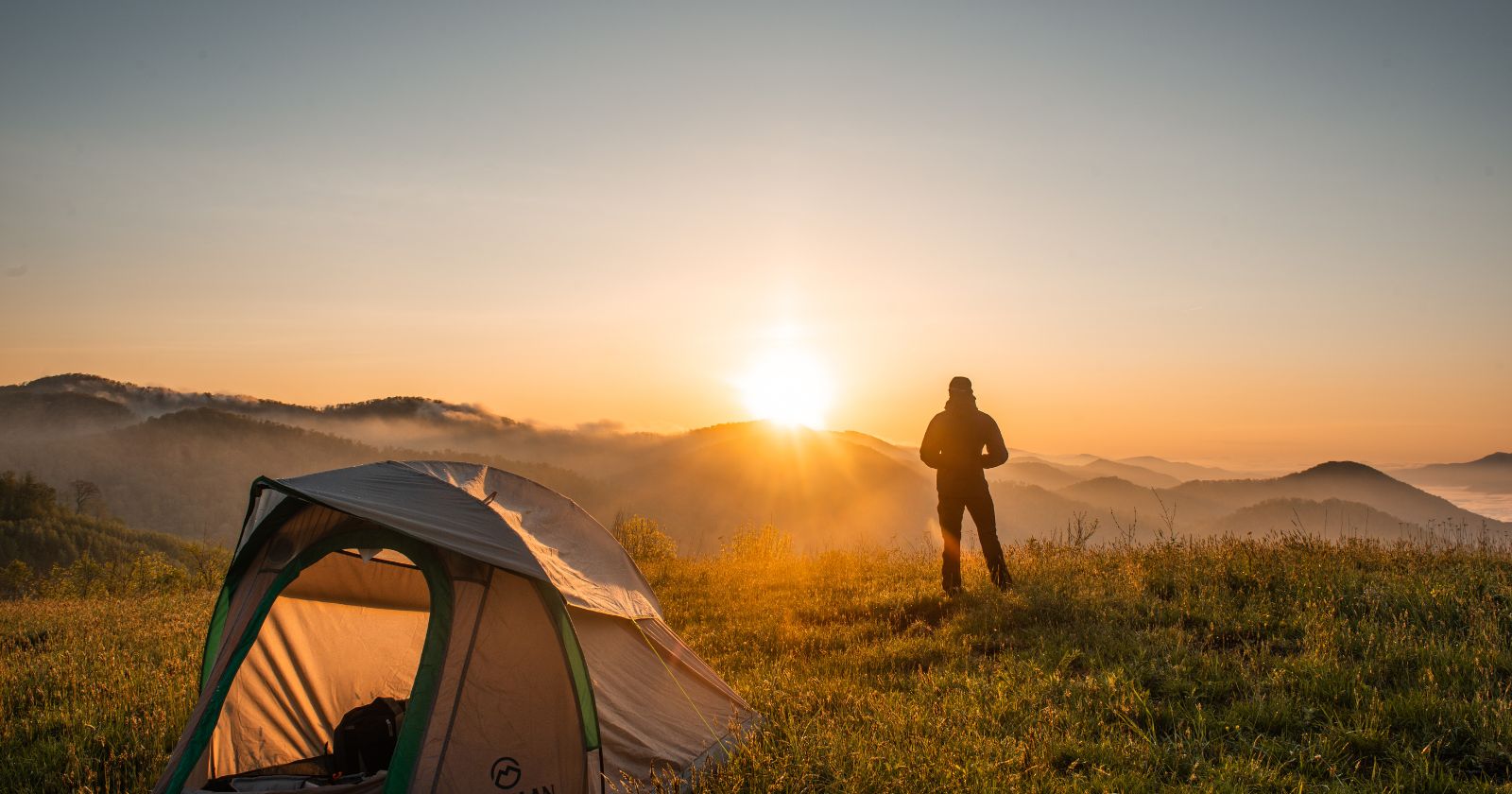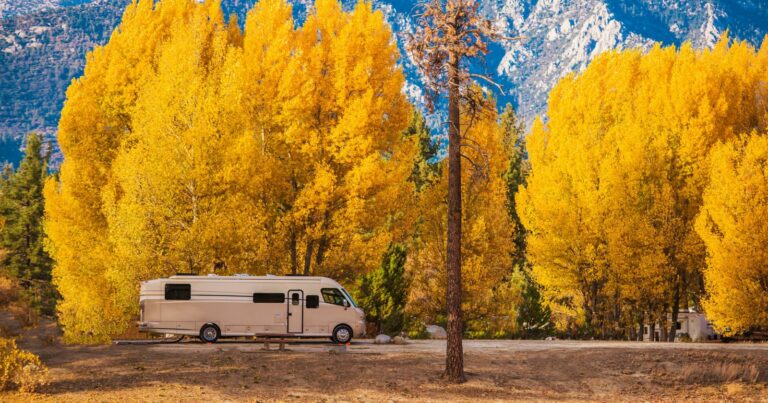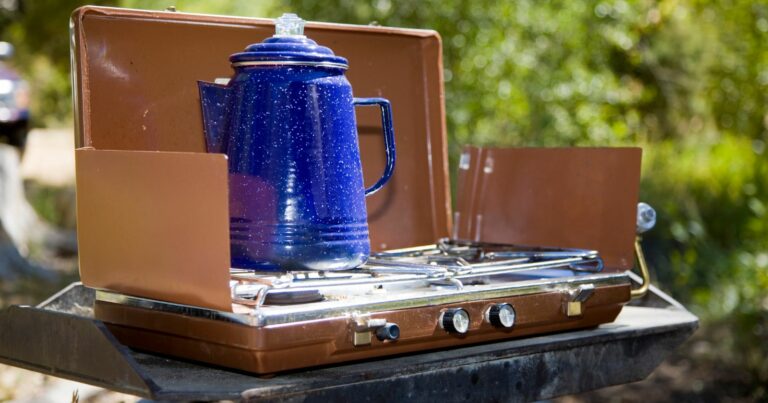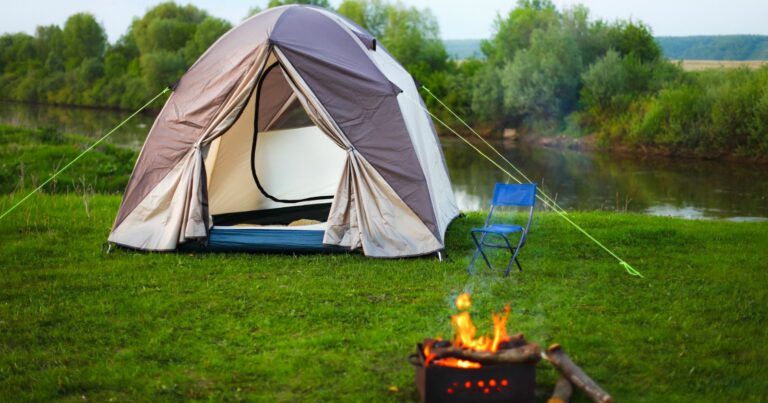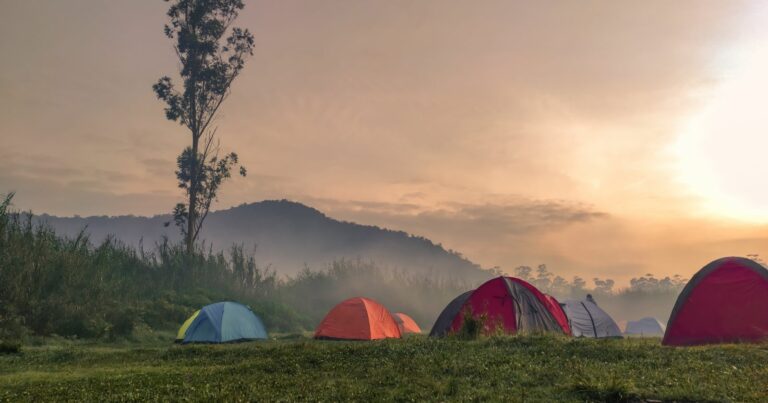When Should You Set Up Camp?
The last bend in the trail opens up to reveal a grassy clearing nestled alongside a gurgling stream. You shrug your heavy pack off your shoulders and take a deep breath of fresh pine-scented air, excited to make this your camp for the night. But when exactly should you start setting up to maximize daylight while allowing time to relax?
The ideal time to establish camp depends on your personal preferences and hiking plan. Many hikers aim to reach camp at least a few hours before sundown. This provides ample time to pitch tents, gather firewood, filter water, and unpack without rushing as darkness falls.
Setting up earlier in the day also enables you to cook and eat dinner while light remains, instead of fumbling with headlamps and lanterns. And who doesn’t want to watch the sunset from the comfort of their campchair before tucking in for the night?
However, some ultra-light backpackers prefer to push farther down the trail before making camp in the late afternoon. This strategy leaves more daylight hours for covering mileage before settling in for the night. Just be sure to have a headlamp handy when unpacking and prepping dinner after dark.
The bottom line is that you should plan to reach your backcountry campsite with sufficient time to establish camp deliberately instead of hastening as daylight dwindles. Factor in your pace, mileage, and preferences when timing your arrival. And most importantly, follow leave no trace principles and any regulations for where you pitch your shelter.
Now that you know when to ideally stop hiking for the day, let’s talk logistics for setting up an organized camp…
Consider Daylight, Campsite Availability, and Weather
Choosing when to make camp is a strategic balance of allowing enough daylight while securing your preferred site. Here are some key considerations when timing your arrival:
Arrive With Enough Daylight
- Give yourself at least 2-3 hours of daylight to comfortably set up camp at a relaxed pace. Rushing after dusk is stressful.
- You’ll need daylight to pitch tents, gather firewood, hang bear bags, pump water, and unpack gear.
- Also prepare and eat dinner while light remains to avoid fumbling in the dark.
Claim Your Campsite Early
- In popular frontcountry campgrounds, sites can fill fast. Arrive early to claim your top pick.
- Backcountry sites are less competitive but still arrive early enough to scout the area and pick an optimal spot.
- Research campground layouts online first to identify sites with desired features like views.
Consider Weather Conditions
- Arrive early on hot days so you can set up when it’s cooler and enjoy the shade.
- Cold weather camping may motivate you to push farther and arrive later to stay warm.
- Be aware of incoming storms – secure shelter early if rain or high winds are imminent.
Factor in Your Hiking Distance and Pace
Your arrival time depends partly on how far you need to hike and your pace. Here are some considerations:
Hiking Farther In Means Arriving Later
- If hiking 5+ miles to camp, consider later arrival to maximize daylight hiking hours.
- If less than a few miles out, arriving mid-afternoon leaves daylight for setting up and relaxing.
Know Your Average Hiking Pace
- Plan your mileage accordingly if you hike slowly – leave ample time to arrive before dark.
- Fast hikers can push farther and arrive later while slower hikers should stop earlier.
- Adjust for pace changes from terrain, elevation gain, pack weight, weather, fatigue, etc.
Build in Buffer Time
- Leave 1-2 extra hours beyond your estimated arrival in case you’re slower than expected.
- Delays could come from rests, water breaks, snack stops, photo ops, pack issues, injuries, or route finding.
Personal Preference Plays a Role Too
Within reason, choose the arrival time that suits your camping style and motivations.
Early Birds
Some enjoy reaching camp earlier to:
- Relax rather than rushing to set up near dark
- Explore the area around camp while daylight remains
- Fish, swim, or do other activities with ample daylight
- Begin winding down before sunset
Late Arrivers
Others prefer to arrive later in the day to:
- Maximize hiking time in the cool morning temperatures
- Reach camp shortly before sunset to minimize idle time
- Cover more mileage and push themselves physically
Ideal Arrival Time Summary
As a general guideline, plan to arrive at your campsite 2-4 hours before sunset. This gives you sufficient time to:
- Scout sites and make camp unhurriedly
- Filter water, pump tents, and unpack
- Collect firewood before dark (if fires allowed)
- Relax and enjoy the surroundings before sunset
- Cook and eat dinner while light remains
- Get settled before night falls
But adjust this window earlier or later based on your specific hiking distances, pace, weather, preferences and other factors. The right arrival time lets you maximize hiking hours without sacrificing camp comfort.
Upon Arrival, Follow Camping Best Practices
Once you’ve chosen the optimal time to stop hiking for the day, be sure to adhere to responsible camping practices when establishing your campsite:
Locate an Appropriate Site
- Use designated campsites when available or choose durable surfaces like rock, gravel, or sand.
- Avoid camping in sensitive areas like meadows, streambanks, or thick vegetation.
Follow Campground Rules
- Observe nightly limits, fire bans, noise policies, and any other posted regulations.
- Pay fees if required and display permits properly.
Practice Low-Impact Principles
- Stick to existing trails and refrain from creating new ones.
- Leave the area better than you found it by cleaning up any trash.
- Follow leave no trace guidelines and minimize your impact.
Be Considerate of Other Campers
- Maintain reasonable distance between sites and respect privacy.
- Keep noise levels low, especially during early morning and nighttime hours.
Enjoy Your Camp Setup!
Arriving at your backcountry campsite can be extremely rewarding after a long day hiking. With some forward thinking and planning, you can time your arrival to smoothly transition into making camp well before dusk. This enables you to comfortably establish camp and make the most of your remaining daylight.
Use the strategies above to determine optimal timing based on the unique factors of each trip. Stick to responsible camping practices once you begin setting up. Then sit back and enjoy the fruits of your preparation as you unwind at your idyllic campsite. You’ve earned it after conquering the day’s miles on the trail!

